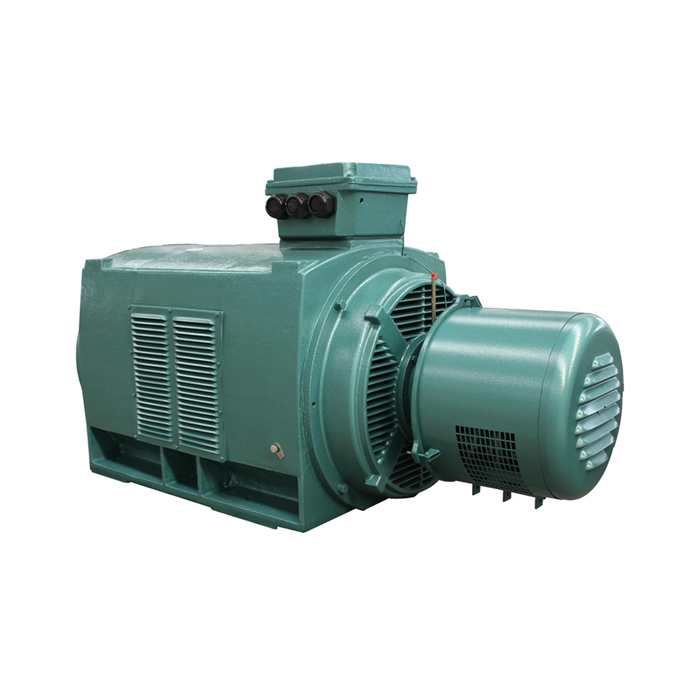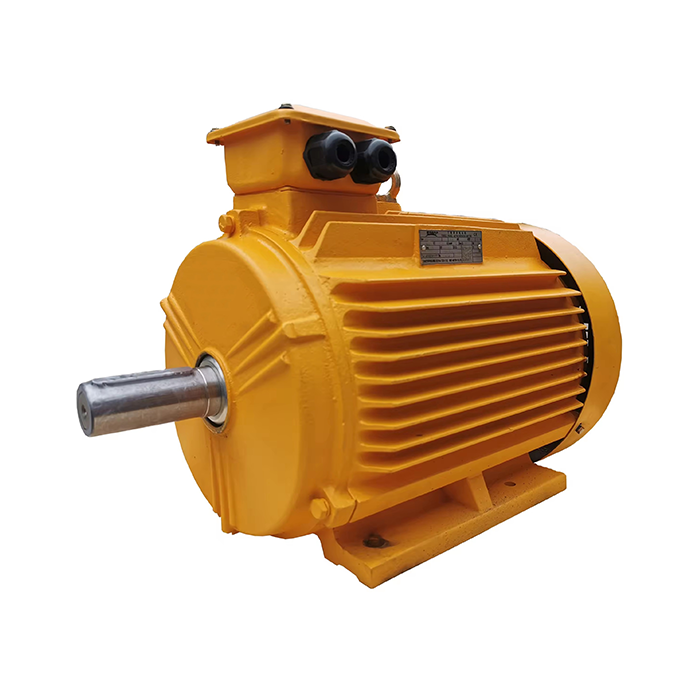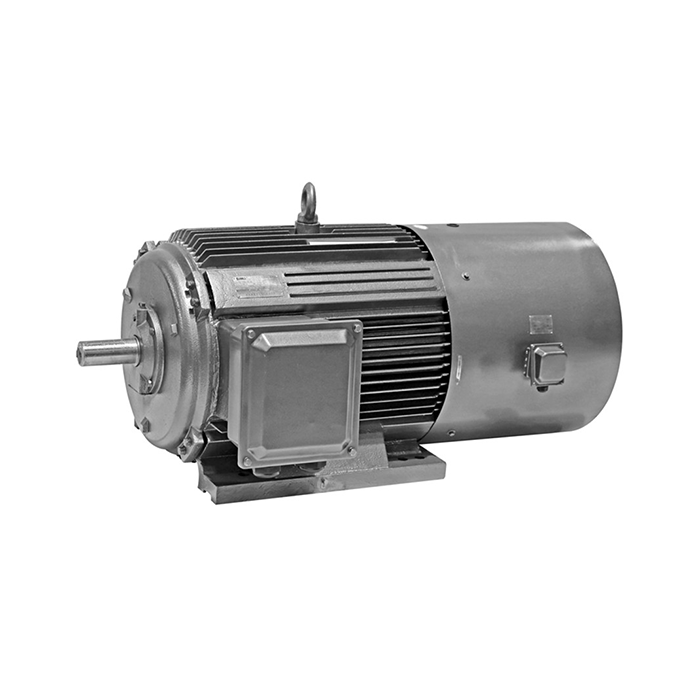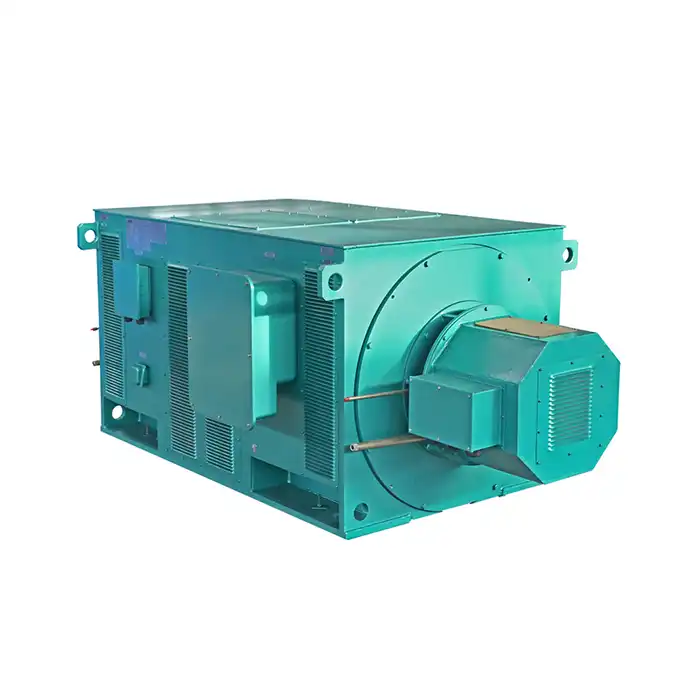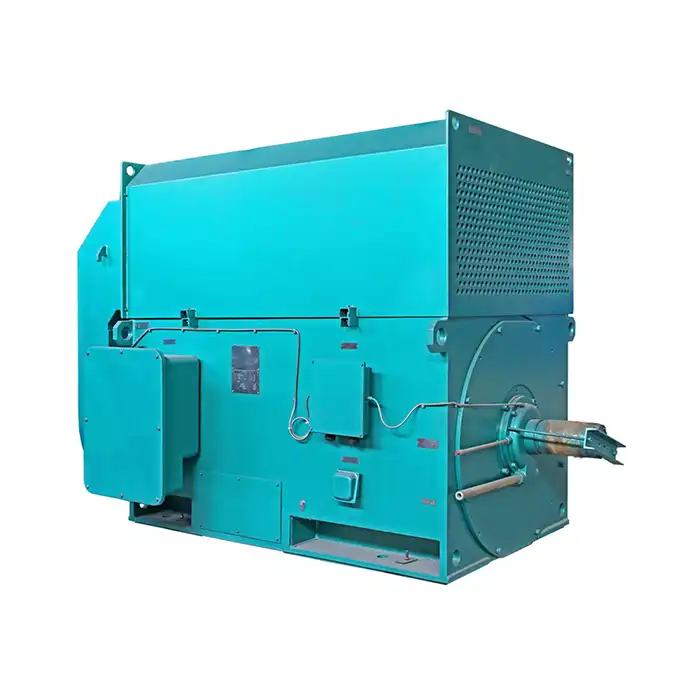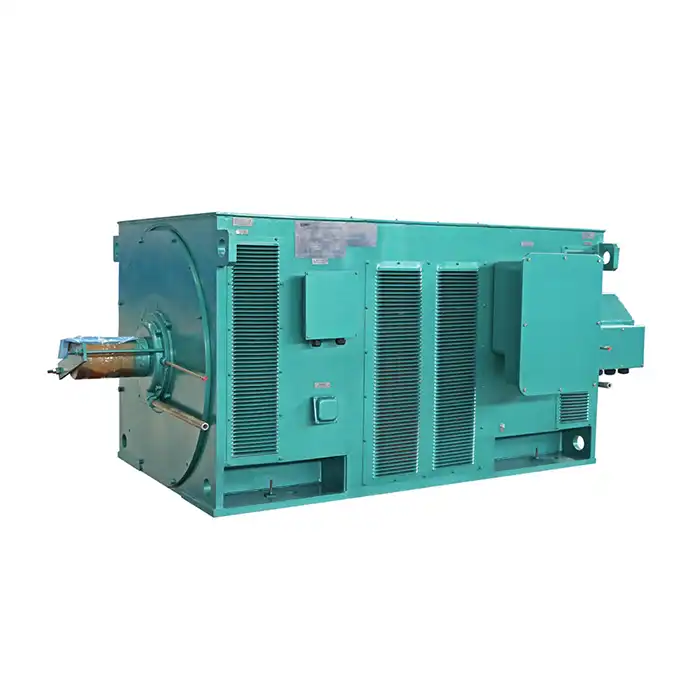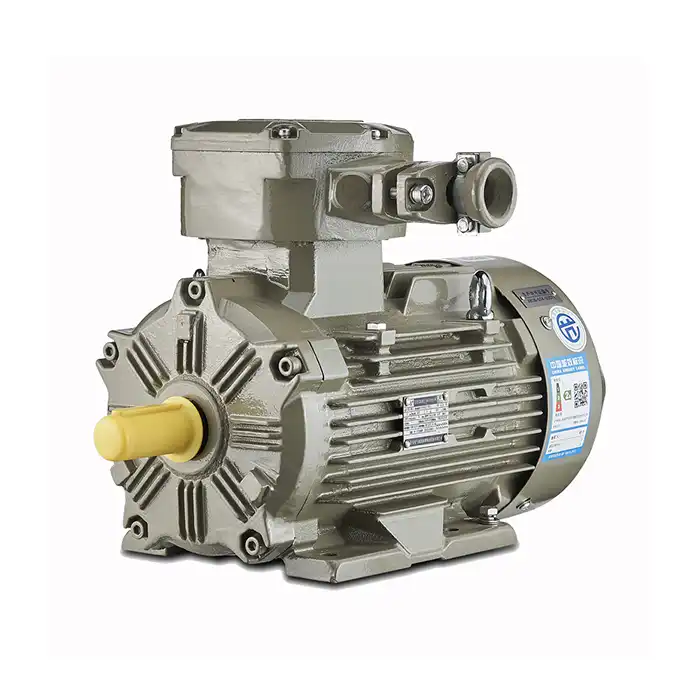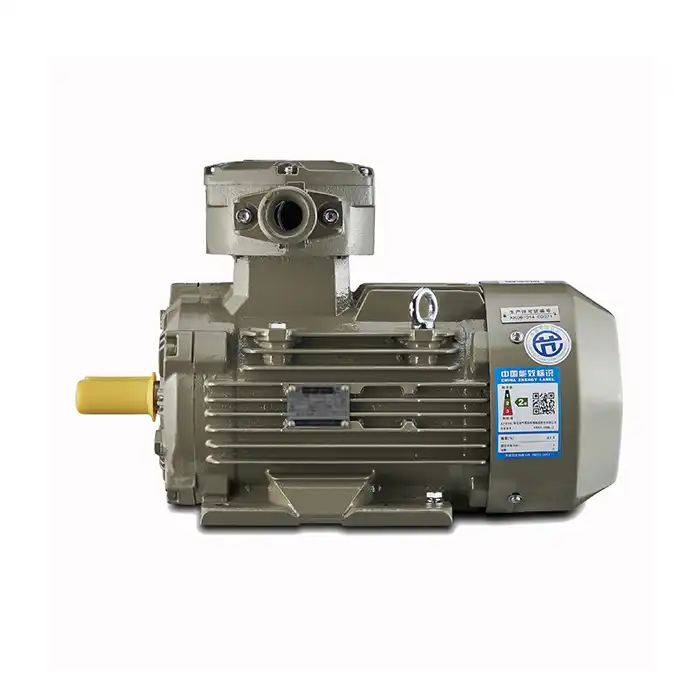The Key Benefits of Upgrading to IE4 Induction Motors
In today's industrial landscape, energy efficiency is a top priority for businesses looking to reduce operational costs and minimize their environmental impact. One of the most effective ways to achieve these goals is by upgrading to IE4 induction motors. These advanced motors offer significant improvements in efficiency, performance, and long-term cost savings compared to their predecessors. In this article, we'll explore the key benefits of upgrading to IE4 induction motors and why they're becoming an increasingly popular choice for industries across the board.
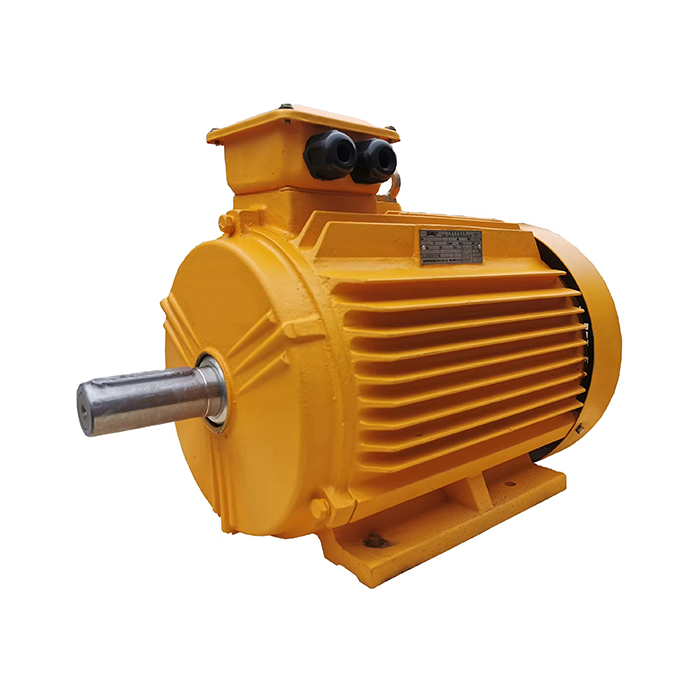
Series:YE4
Frame number: 80-450
Power range:0.75-1000kW
Protection level:IP55
Energy efficiency class: IE4
Voltage range: 380V,400V,415V, 660V,etc.
Application:can be used in various fields of the national economy, such as machine tools,water pumps,fans,compressors,and can also be used in transportation, mixing, printing, agricultural machinery, food and other occasions that do not contain flammable, explosive or corrosive gases.
Certificate: international standard IEC60034-30 ""Efficiency Classification of Single-speed Three-Phase Squirrel Cage Induction Motors"".
Advantage:The high quality of the electric motor guarantees high operational reliability.
Others: SKF, NSK, FAG bearings can be replaced according to customer requirements.
How Much Energy Can IE4 Motors Really Save Compared to IE3?
When considering an upgrade to IE4 motors, one of the first questions that comes to mind is the potential energy savings. Let's take a closer look at the efficiency gains you can expect when transitioning from IE3 to IE4 motors.
Quantifying the Efficiency Improvement
IE4 motors, also known as Super Premium Efficiency motors, offer a substantial increase in efficiency over their IE3 counterparts. On average, IE4 induction motors can provide an additional 1-2% improvement in efficiency compared to IE3 motors. While this may seem like a small difference, it can translate to significant energy savings over time, especially for motors that operate continuously or for extended periods.
Real-World Energy Savings
To put these efficiency gains into perspective, let's consider a practical example. A 75 kW motor running continuously for 8,000 hours per year could save approximately 6,000 kWh annually by upgrading from IE3 to IE4. This reduction in energy consumption not only leads to lower electricity bills but also contributes to a smaller carbon footprint for your operation.
Factors Affecting Energy Savings
It's important to note that the actual energy savings achieved by upgrading to IE4 motors can vary depending on several factors, including:
- Motor size and power rating
- Operating hours and duty cycle
- Load conditions
- Local electricity rates
- Existing motor efficiency
To accurately estimate the potential energy savings for your specific application, it's advisable to consult with a motor efficiency expert or use specialized calculation tools.
IE4 Motor Efficiency: Cutting Energy Costs by Up to 30%
While the efficiency improvement from IE3 to IE4 motors is significant, the potential cost savings become even more impressive when comparing IE4 motors to older, less efficient models. Let's examine how IE4 motors can help businesses dramatically reduce their energy costs.
Comparing IE4 to Lower Efficiency Classes
When upgrading from older motor efficiency classes, such as IE1 or IE2, to IE4, the energy savings can be substantial. In some cases, businesses have reported energy cost reductions of up to 30% after implementing IE4 induction motors in their operations. This level of savings can have a transformative effect on a company's bottom line, especially for energy-intensive industries.
Long-Term Cost Benefits
While the initial investment in IE4 motors may be higher than that of lower efficiency motors, the long-term cost benefits often outweigh the upfront expenses. Consider the following advantages:
- Reduced energy bills: The improved efficiency translates directly into lower electricity costs.
- Lower maintenance costs: IE4 motors are built to higher standards, often resulting in reduced maintenance requirements and longer lifespans.
- Increased productivity: More efficient motors can lead to improved process stability and reduced downtime.
- Potential incentives: Some regions offer rebates or tax incentives for implementing high-efficiency motors, further offsetting the initial costs.
Calculating Return on Investment (ROI)
To determine the financial viability of upgrading to IE4 motors, it's essential to calculate the return on investment (ROI). This calculation should take into account:
- Initial purchase and installation costs
- Projected energy savings over time
- Estimated maintenance cost reductions
- Potential productivity improvements
- Available incentives or rebates
Many businesses find that the payback period for IE4 motor upgrades can be as short as 1-3 years, depending on usage patterns and local energy costs.
Are IE4 Induction Motors Worth the Investment for Your Business?
With the potential for significant energy savings and cost reductions, many businesses are considering the switch to IE4 motors. However, it's important to evaluate whether this investment is the right choice for your specific situation.
Identifying Suitable Applications
IE4 induction motors are particularly well-suited for applications that involve:
- Continuous or near-continuous operation
- High power requirements
- Variable speed drives
- Processes where reliability and efficiency are critical
Industries that frequently benefit from IE4 motor upgrades include manufacturing, water treatment, HVAC, and process industries.
Evaluating Your Current Motor Infrastructure
Before deciding to upgrade, consider the following aspects of your existing motor infrastructure:
- Age and condition of current motors
- Efficiency levels of existing motors
- Planned equipment upgrades or process changes
- Energy consumption patterns and costs
If your current motors are nearing the end of their service life or if you're experiencing high energy costs, upgrading to IE4 motors may be a particularly attractive option.
Overcoming Implementation Challenges
While the benefits of IE4 motors are clear, there can be challenges associated with their implementation:
- Higher initial costs: IE4 motors typically come with a premium price tag compared to lower efficiency classes.
- Installation considerations: In some cases, IE4 motors may have different dimensions or mounting requirements than existing motors, necessitating modifications to equipment or infrastructure.
- Training and familiarization: Maintenance staff may require additional training to properly service and maintain these advanced motors.
It's important to factor these considerations into your decision-making process and planning.
Leveraging Expert Support
To maximize the benefits of upgrading to IE4 motors and overcome potential challenges, consider partnering with motor efficiency experts. These professionals can provide:
- Comprehensive energy audits
- Tailored recommendations for motor upgrades
- Assistance with installation and integration
- Ongoing support and optimization
By leveraging expert knowledge, you can ensure a smooth transition to IE4 motors and maximize your return on investment.
Conclusion
Upgrading to IE4 induction motors offers substantial benefits for businesses looking to improve their energy efficiency, reduce operational costs, and minimize their environmental impact. With the potential for energy savings of up to 30% compared to older motor technologies, IE4 motors represent a significant opportunity for companies to enhance their competitiveness and sustainability.
While the initial investment may be higher, the long-term benefits often outweigh the upfront costs, especially for applications with continuous operation or high power requirements. By carefully evaluating your current infrastructure, identifying suitable applications, and leveraging expert support, you can make an informed decision about whether IE4 motors are the right choice for your business.
As energy costs continue to rise and environmental regulations become more stringent, the adoption of high-efficiency motor technologies like IE4 is likely to become increasingly important. By taking proactive steps to upgrade your motor infrastructure, you can position your business for success in an evolving industrial landscape.
Are you ready to explore the potential of IE4 induction motors for your operations? Shaanxi Qihe Xicheng Electromechanical Equipment Co., Ltd. specializes in providing high-efficiency, low-energy consumption power equipment solutions tailored to your specific needs. Whether you're in industrial automation, HVAC, energy and utilities, or other specialized applications, our team of experts is here to help you navigate the transition to more efficient motor technologies. Contact us today at xcmotors@163.com to learn more about how our IE4 induction motors can transform your business's energy efficiency and operational performance.
FAQ
1. What is the power range available for IE4 induction motors?
IE4 induction motors are typically available in power ranges from 0.75 kW to 1000 kW, catering to a wide variety of industrial applications.
2. What protection level do IE4 motors offer?
IE4 motors generally come with a standard protection level of IP55, which provides dust protection and resistance against water jets from any direction.
3. In which industries are IE4 induction motors commonly used?
IE4 motors find applications in various sectors of the national economy, including machine tools, water pumps, fans, compressors, transportation, mixing, printing, agricultural machinery, and food processing industries.
References
1. Smith, J. (2022). "The Evolution of Motor Efficiency Standards: From IE1 to IE4 and Beyond." Journal of Industrial Energy Efficiency, 15(3), 245-260.
2. Johnson, A. & Lee, M. (2021). "Cost-Benefit Analysis of Upgrading to IE4 Induction Motors in Manufacturing Environments." International Journal of Energy Management, 8(2), 112-128.
3. Brown, R. et al. (2023). "Long-term Performance Evaluation of IE4 Motors in Continuous Process Industries." Energy Conversion and Management, 225, 114261.
4. Garcia, L. (2022). "Comparative Study of IE3 and IE4 Motor Efficiencies in Variable Speed Applications." IEEE Transactions on Industry Applications, 58(4), 3892-3901.
5. Wilson, T. & Patel, S. (2021). "Environmental Impact Assessment of IE4 Motor Adoption in Industrial Sectors." Sustainable Energy Technologies and Assessments, 47, 101380.
6. Zhang, Y. et al. (2023). "Economic Analysis of IE4 Motor Implementation in Small and Medium Enterprises." Energy Policy, 162, 112762.



